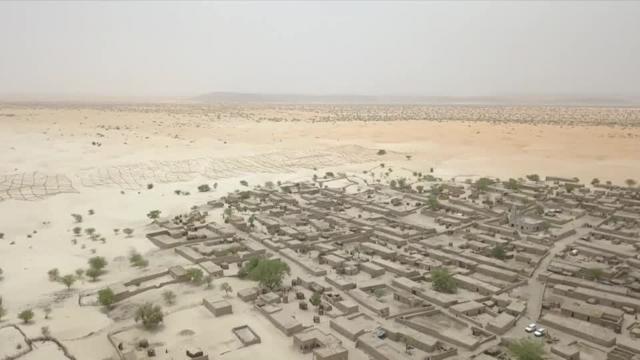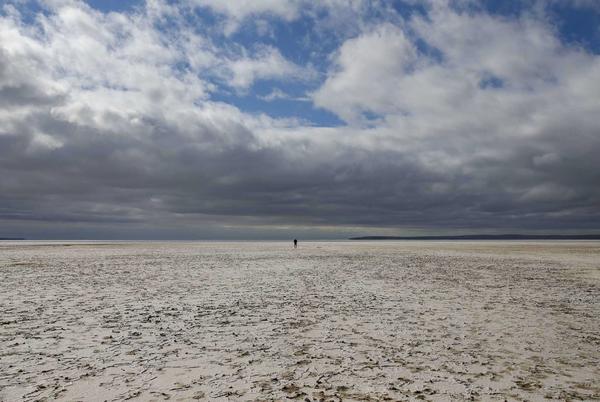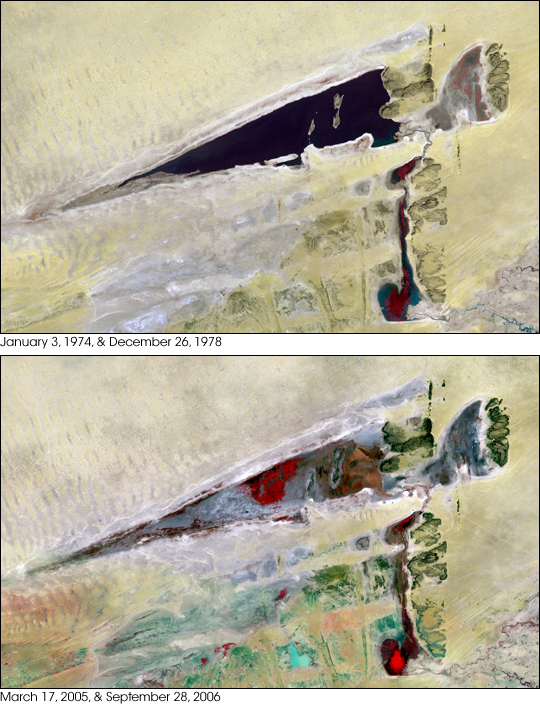
This was once one of the largest lakes in West Africa – Lake Fauibine. But since it has completely dried up, communities in northern Mali have had to defend their homes from encroaching sand dunes. And find new ways to scratch a living from the degraded soil.
More than 200,000 people have had to abandon their traditional livelihoods since the river started to disappear following catastrophic droughts in the 1970s.

Abdul Karin Ag Al Hassane is a farmer-turned-herder and explains:
“All this area was covered by water, then the water receded and trees started to grow around the lake, then the trees started to disappear and people grew crops where the trees used to be. During the first rebellion, displaced persons arrived. They destroyed the forest. And once the forest was gone, sand dunes formed.”
Other farmers like Mahamadou Ousmane say tensions are high between livestock herders and other farmers over the little fertile land and water available.
He said regular disputes have led to rising levels of crime. “After we’ve harvested our produce we have to transport it, and that’s dangerous. Even the women you see behind me are at risk. Their maize may be stolen on the way.”
Many have left the area due to the lack of economic opportunities in the area. Former farmer Moussa Mouhamadou Toure said his family survives on what his son sends home from the capital Bamako.

The shrinking population of Lake Faguibine is set to come under further pressure drought and high temperatures. Average temperatures in northern Mali are expected to rise up to 4.7 degree Celsius – that’s an increase of over 40 degree Fahrenheit.
Another lake in the same area, Mali’s Lake Wegnia, which provides food & water to thousands of residents, is also shrinking due to rising heat and unpredictable rains.
There were efforts to boost resilience by restoring Faguibine’s wetlands, hoping to make the area the breadbasket of the Timbuktu region. But that has been derailed by waves of conflict, including the most recent Islamist insurgency, according to a 2016 study in the African Journal of Aquatic Science.
In the village of Bintagoungou, the advancing dunes have buried a schoolyard and cracked the empty buildings’ foundations. Hama Abacrene is the mayor of the village:
“This is a school for almost 400 students. 400 students. That’s an entire generation. A lost generation, a generation condemned to flee. Or be recruited.”
Mali and its climate
Home to more than 13 million people, Mali stretches from the Sahara Desert in the north to the semiarid grassland known as the Sahel in the south. Just 3.8 percent of the country’s land is arable, and increased use of natural resources combined with prolonged drought have nudged the country toward desertification.
One example of increasing aridity in Mali appears in Lake Faguibine. These false-color Landsat satellite images of the lake show how it changed over the decades. The top image is made from observations acquired on January 3, 1974, and December 26, 1978. The bottom image is made from observations acquired on March 17, 2005, and September 28, 2006. Made with a combination of visible and infrared light, the images show vegetation as red, water as blue, and bare ground in shades of beige and gray.

Lying at the end of a series of basins watered by the Niger River when it floods, Lake Faguibine has experienced widely fluctuating water levels since the turn of the twentieth century but, at its fullest, has ranked among the largest lakes in West Africa.
In 1974, this lake covered roughly 590 square kilometers (230 square miles). Starting in the late 1980s, a drop in precipitation steadily dried the lake. By the late 1990s, the traditional livelihoods of fishing, agriculture, and livestock herding became impractical. Even though normal rainfall resumed after the year 2000, the lake remained nearly dry and turned into desert with sand dunes… [Yahoo, EOS]
You should really watch the documentary film: Megadrought – Vanishing Water and prepare accordingly!














Sunda Plate, Andaman Sea buoy 23461is in event mode for the 5th time in the past 48 hours, showing an 8 meter rise of the ocean bottom.
It’s getting closer I know I shouldn’t but I feel excited
BE PREPARED MY FELLOW CITIZENS AMD YOU’LL BE JUST FINE
It’s called CLIMATE Change!!!
The Earth’s climate has changed for MILLIONS of years and Man and/or Dinosaurs have no control. The Sun (SOL) is the controller of temps on this solar systems temps. Sol gets hotter – we get hotter. Sol gets cooler – we get cooler.
And we are now in a COOLER time period. It will last from anywhere of 20 yrs to 5-8 decades.
Get warm coats Folks!